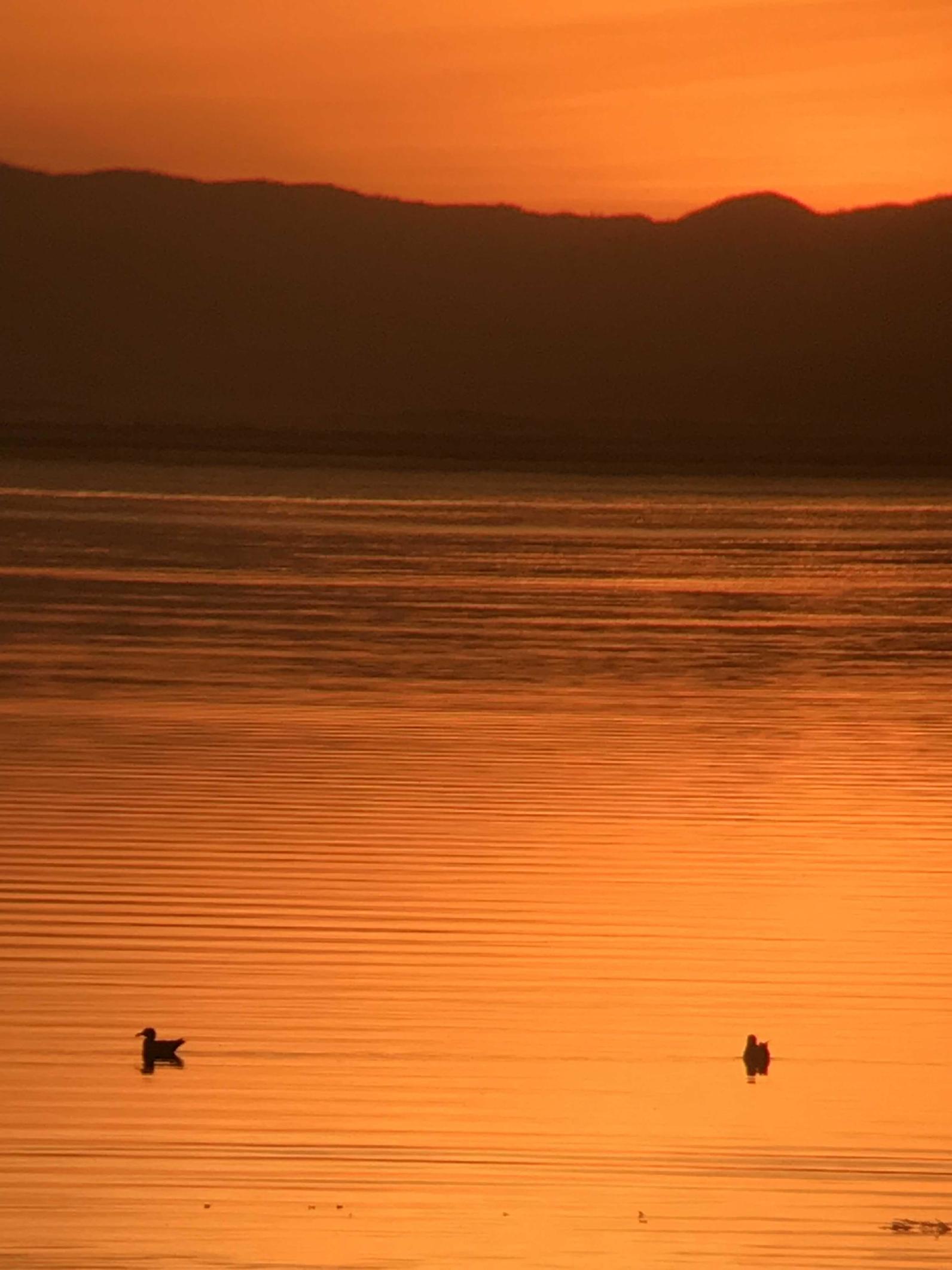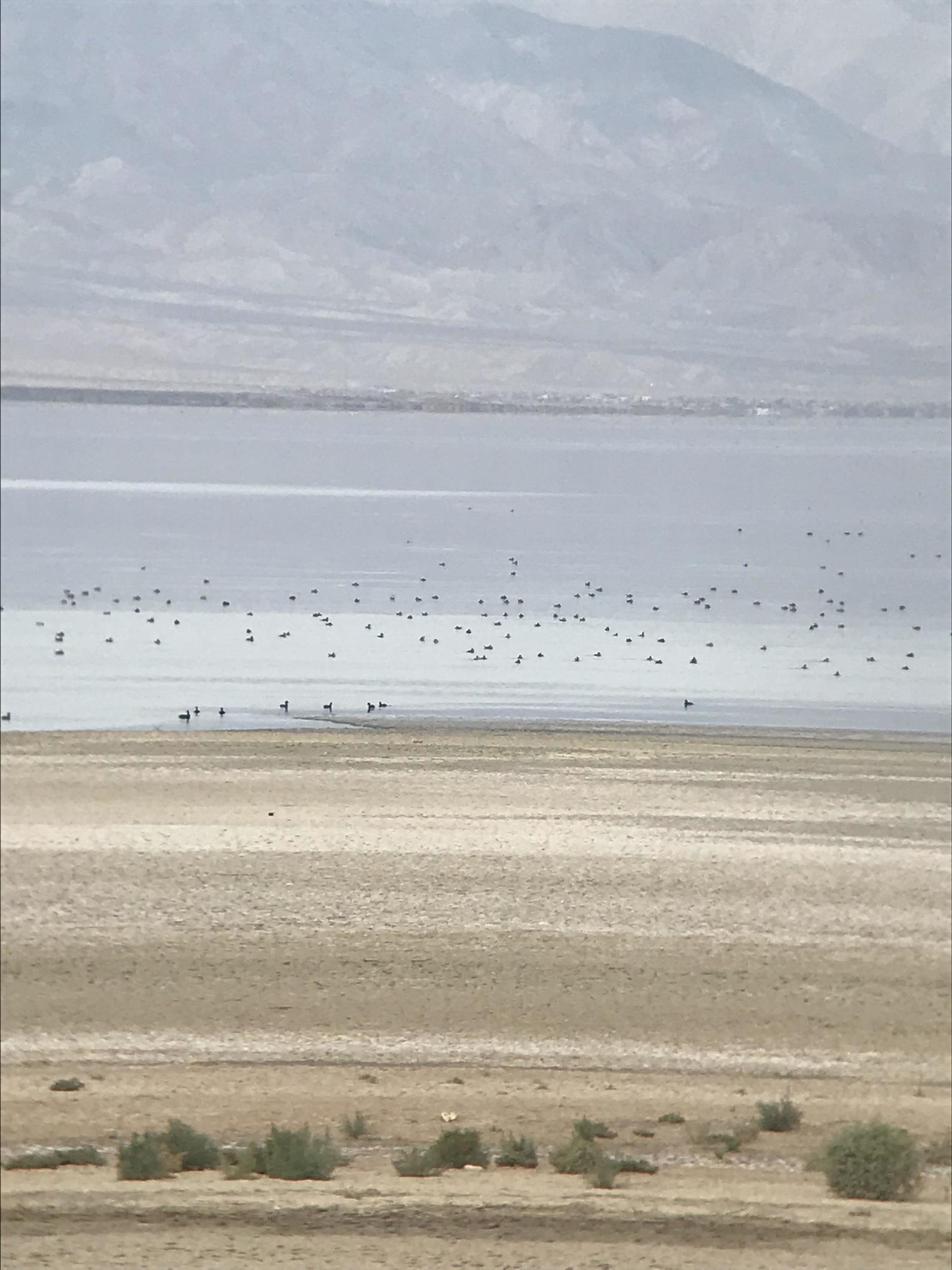
Our November 2018 rapid-assessment waterbird survey at the Salton Sea marks the start of the third year of bi-monthly surveys of fourteen 1km x 1km survey boxes along the shoreline of the sea.
Fish-eating waterbirds continue their decline, with just a single American White Pelican detected (more were observed outside the survey boxes, but not many). Nov. 2016 had 174 white pelicans, while Nov. 2017 had 13. Brown Pelicans were also scarce with two found (vs. 62 in Nov. 2016, then 10 in Nov. 2017). Double-crested Cormorant numbers have similarly plummeted, with 65 across the 6 counts in 2018, vs. 753 in 2017.
Large waders (herons/egrets) continue in small numbers, but Snowy Egret counts exceeded 100 for the 2018 survey, so it's possible they're feeding on small fish, which may indicate successful spawning (It would be interesting to see if fish monitoring confirms this). Most birds were observed at freshwater inlets to the sea, as along the southeastern seawall.
Eared Grebes may be making a small comeback, with 672 birds tallied in Nov. 2018, vs. 0 in Nov. 2017 (and 466 in Nov. 2016). It is possible they are eating the abundant water boatmen (insects) now abundant on the surface of the sea, an ephemeral food source that has been particularly common in the past year.

Ducks remain common if not increasing, with nearly 12,000 Northern Shoveler recorded for 2018, vs. 8600 in 2018. While we don't have many prior years for comparison, Nov. 2016 found 795 Northern Shoveler, while Nov. 2018 found more than 5,000. Northern Pintail numbers also jumped from c. 300 in 2017, to c. 2000 in 2018. These are most abundant along the southwestern corner of the sea, visible from the end of Poe Rd.
Ruddy Duck counts roughly doubled 2017-2018, from c. 6000 to c. 11,000.
Shorebirds continue to increase, with 6,462 "peeps" (small shorebirds) in 2017, to c. 10,000 in 2018. Individual species counts also showed many increases across the past three Novembers, such as Willet, going from 116 to 188 to 308 on Nov. counts from 2016-2018.
Daniel S. Cooper, from Cooper Ecological Monitoring, Inc., performs regular monitoring at the Salton Sea for Audubon California.
By Daniel S. Cooper
Monthly Giving
Our monthly giving program offers the peace of mind that you’re doing your part every day.




